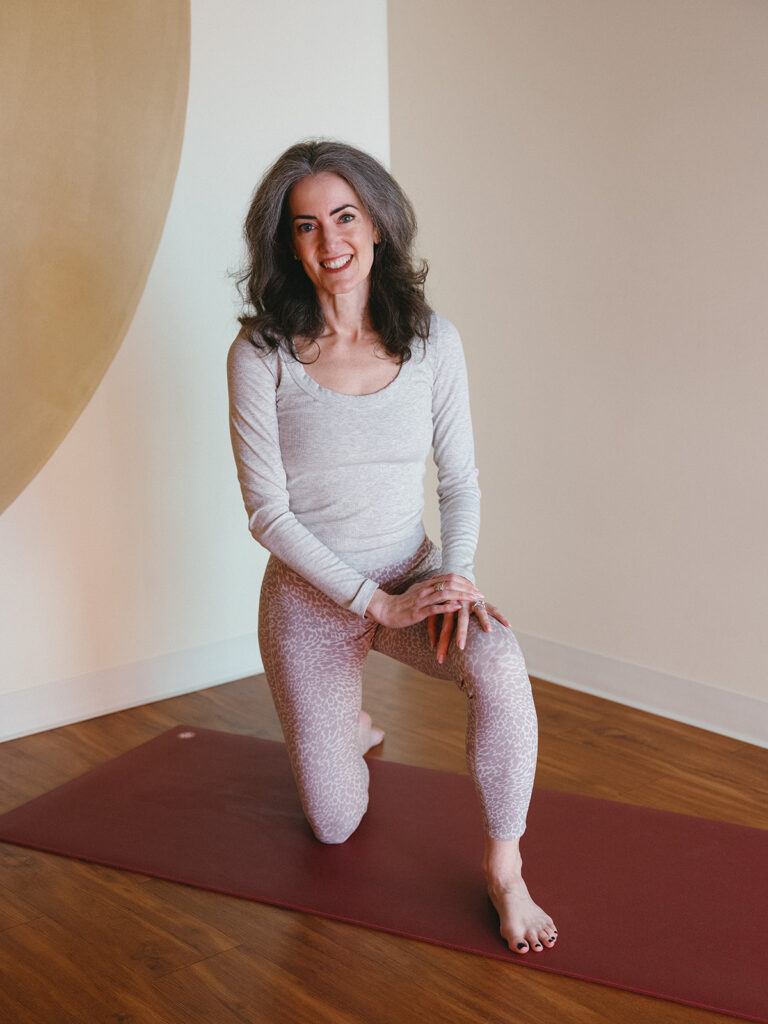It was a treat to connect with the sweet students at Yoga Journal LIVE! in New York last weekend. I taught three sessions and, as promised, am writing up a postview with practice notes. (This is my preferred method, as it lets me teach to the students who are there, versus rigidly following a handout.) When page numbers are noted below, they refer to my latest book, Everyday Yoga. If you’d like to know more about my approach to teaching yoga to athletes and everyone, and the way I sequence workshops and classes, visit Sage Yoga Teacher Training, where you’ll find online courses to help you design balanced, innovative yoga practices for yourself and your students. Or come to my North Carolina yoga studios—we offer a wide range of yoga teacher trainings at the 200- and 500-hour levels, as well as continuing education. Read more here.
https://www.instagram.com/p/BD8Nl76FuZW/?taken-by=sagetree
Core Strength for Real People
- Think of the core as a container: front (abs), back (back), top (diaphragm), and bottom (pelvic floor)
- Think in terms of cardinal directions—north, south, east, west—and ordinal directions—northeast, southwest, etc. Do movements in every direction.
- Think in terms of the room: looking front, up, down, left, and right
- Think in terms of stabilization and articulation
Sequences
- Leg-Swing Flow (pp. 36–37). We added stabilization with rainbow arcs as one leg extended backward.
- Seated cat/cow to Dynamic Core (pp. 68–69). In the bridge, we added shifting weight on the feet, marching, and leg lifts.
- Planks and Backbends (pp. 58–59).
- Table/boats/folds (pp. 76–77). We added “listing boat” by rocking to one hip and lowering to half boat.
A More Perfect Union: Building Better Balance
Balance is a dynamic union between hard and soft, effort and ease, sthira (stiffness, stability) and sukha (sweetness, mobility). We need balance top to bottom, front to back, and left to right—and we need to find the right balance between work and rest so that we are challenged to grow but capable of adapting. We used this physical practice to explore areas of balance and imbalance in our bodies.
Sequences
- Six moves of the spine standing with chair, as demonstrated here: http://www.yogajournal.com/slideshow/5-yoga-poses-winter-endurance-sports/
Crane flow and starfish flow, as described here: http://www.runnersworld.com/workouts/the-body-shop-standing-core-strengtheners
Next, we moved through three iterations of dancer, tree, pigeon, and eagle pose, all of which appear in Everyday Yoga.
- Standing Balance Flow (pp. 50–51)
- Dancer/Tree/Pigeon/Eagle (pp. 60–61). Instead of pigeon leg in side plank, we did lifts to bridge with a figure 4 cross of the leg.
- Reclining Twists (pp. 80–81). We included a side bow as our dancer pose variation.
Yoga for Athletic Recovery (and Tired Moms)
Nothing feels better after a full day of active asana and listening than gentle and restorative yoga! In this late-afternoon session, we rolled around on the floor in mellow poses. It’s exactly when you don’t feel like you have time for a practice like this that you need it the most. For more on the mechanics of athletic recovery, please see my book The Athlete’s Guide to Recovery. These routines appear in Everyday Yoga.
Sequences
- Supported backbend
- Six Moves of the Spine, Supine, One Leg (pp. 38–39)
- Six Moves of the Spine, Prone, Bent Knee (pp. 34–35)
- Tree with side bend, hip to wall; twist to wall, raised leg against it
- “Christina’s World” (pp. 66–67)
- Reclining Twists (pp. 80–81)
Students: I look forward to seeing you again, if only online here and at Sage Yoga Teacher Training!

